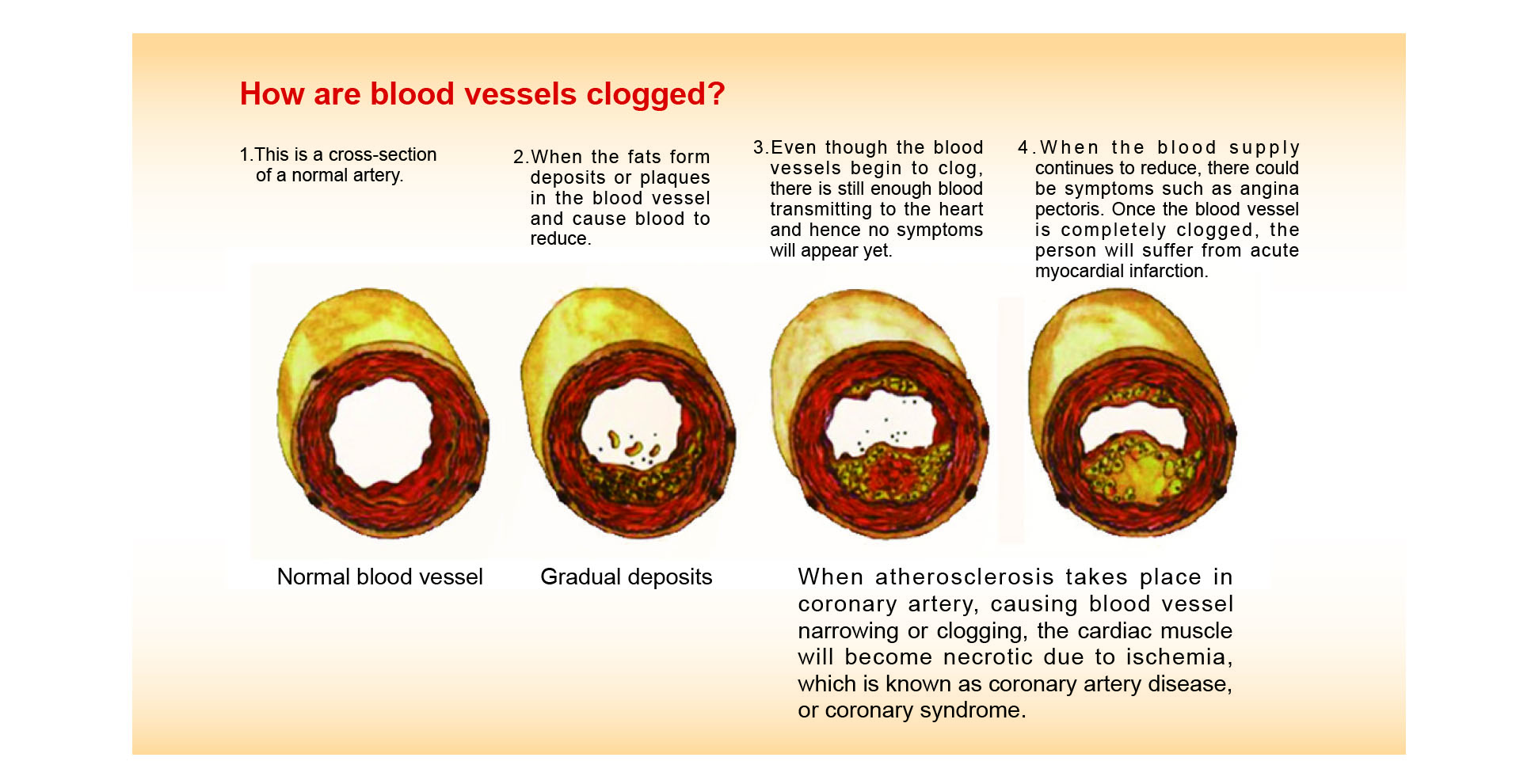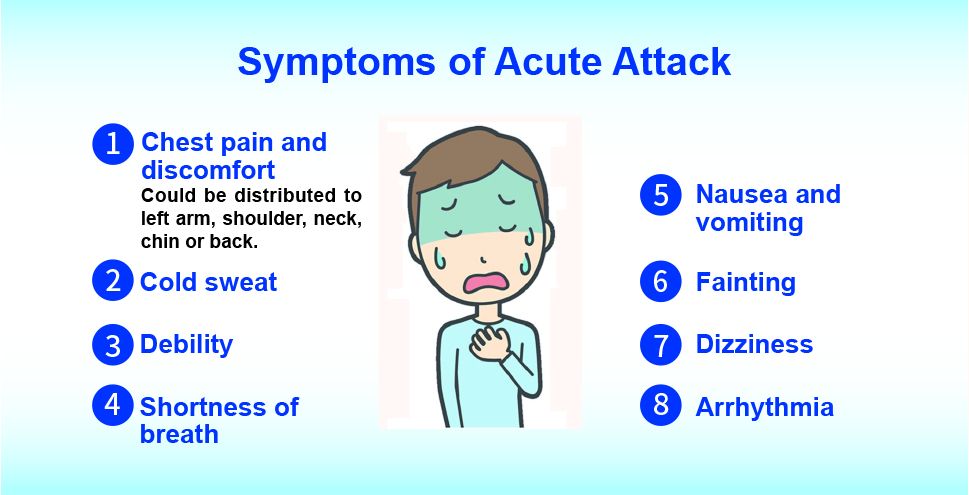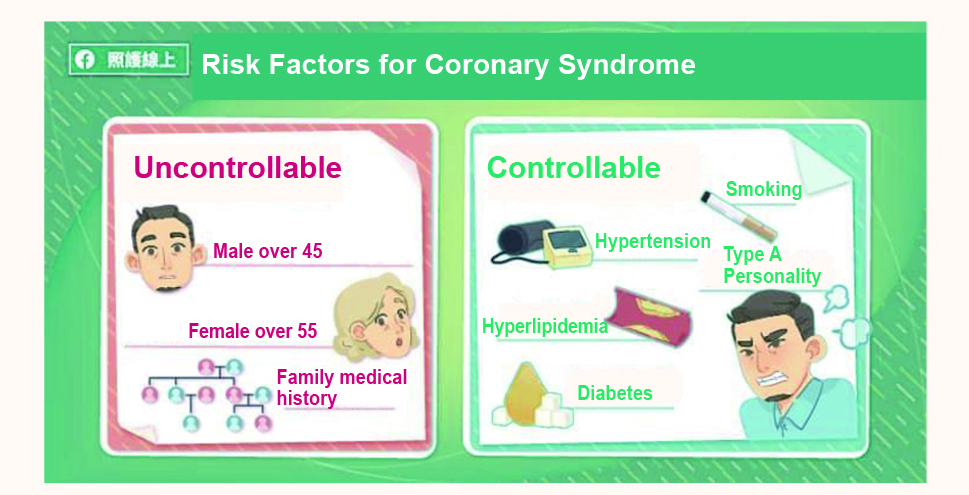Corporate Citizen
企業公民
Prevent Acute Coronary Syndrome and the 3-Highs with Regular Health Checks
At CTCI, we care about the health of our colleagues and provide annual employee health checks to keep a track of their health. In addition, the Group’s Health Center will regularly review colleagues’ health examination report to identify those with high risks and conduct workload assessment surveys, arrange for physician visits (interviews), etc., to ensure the health of colleagues. Among the prevailing health conditions/disease resulted from modern lifestyle, we notice that factors such as unbalanced life, poor nutrition, and stress have led to younger patients suffering from acute coronary syndrome, angina pectoris, and myocardial infarction. Consequently, it is of imperative importance that early diagnosis be made to provide care at the earliest possible stage and prevent these diseases effectively.
Case sharing: I never thought that I would be diagnosed with myocardial infarction
I was feeling weird in the morning when taking the annual employee health check at the hospital the other day; it was like a stone pressing against my chest, making me feel ill (I thought that I was feeling stuffed chest last night but everything seemed to be alright). Suddenly, I felt acute pain on the left of my back and I could not stand or talk at all. Companied by breathlessness and dizziness, I crouched immediately and wondered what was happening. At this time, I heard the nurses asking me to sit down and rest. After the nurses examined me, my initial thought then was because I was taking the checkup without having breakfast, which may result in my dizziness. But I was feeling extremely sick after laying down, and I could hardly breathe any air. The nurses at the health checkup center immediately determined the need for hospitalization and then I was sent to the emergency room. After drawing blood and taking a series of exams such as the ECG (electrocardiogram), 12-lead ECG and echocardiography, I was diagnosed with acute myocardial infarction (acute coronary syndrome) due to the high CK (creatine kinase) levels. I was then transferred to the ICU for observation. With the good company and care by my family, I completed the cardiac catheterization and stenting. After getting discharged from the hospital, I followed the doctor’s instruction to take an antiplatelet and eat on a low-sodium, low-fat diet, with rich content of fiber. Most importantly, I had to quit smoking and keep light exercise to strengthen my muscular functions.
The Invisible Killer: The 3-Highs and Coronary Syndrome
According to the statistics of the mortality in Taiwan released by the Ministry of Health and Welfare in 2020, cardiac disease is the second leading cause of death in Taiwan and on average, 1 person dies from cardiac disease every 26 minutes. Cardiovascular diseases are closely related to the 3 H’s (hypertension, hyperglycemia, hyperlipidemia). The so-called coronary syndrome (coronary artery disease) refers to the blood supply of myocardium comes from the coronary artery extended from the aorta, and the cardiac disease caused by coronary artery narrowing or clogging are known as coronary artery disease. The reason of coronary artery clogging is due to the plaque of fatty deposits formed after atherosclerosis (the buildup of fats, cholesterol and other substances in and on artery walls). The ruptures or splits of plaques formed will cause blood coagulation and form blood clot that leads to myocardial ischemia, known as coronary embolism or clogging. The reduced supply of blood to certain part of myocardium causing myocardial damage or necrosis is known as myocardial infarction. The main symptoms for patients with myocardial infarction include persistent chest pain, chest tightness, night sweats, palpitation, hiccup, vomiting, nausea, weakness, and dizziness. Approximately 15~20% of patients do not have any symptoms when having acute myocardial infarction, particularly among the elderly and patients with diabetes.

How are blood vessels clogged? (Health Promotion Administration, Ministry of Health and Welfare)
Acute Conditions of Coronary Syndrom
1.Angina Pectoris: This condition usually takes place during exercise or experiencing intense emotions, where the heart beats rapidly but the blood supply is inadequate. Patients often experience chest pain or pressure on the chest. Sometimes the pain will spread from the chest to the neck, upper extremity and back. Most of the patients can take some rest to sooth the symptoms of chest pain. As directed by the doctor, patients may take sublingual tablets (nitroglycerin) to alleviate the condition (1 tablet may be used every 3 minutes as needed, for up to 2 tablets in succession). If patients still have chest pain after using nitroglycerin, get medical help right away. 2.Myocardial Infarction: When the coronary arteries are clogged and the blood supply to myocardium is blocked over 15~30 minutes, the myocardium could not receive enough oxygen and nutrients, which results in myocardial necrosis. The level of chest pain is more severe than that of angina pectoris, as the continuation remains long and companied by sweating, trouble breathing, and lack of strength. In some severe cases, patients may suffer from sudden cardiac death or shock due to arrhythmia, or heart failure.

Symptoms of Acute Attack (Health Promotion Administration, Ministry of Health and Welfare)
Prevention is Better than Cure: Importance of Regular Health Checks
Acute myocardial infarction often happens acutely and quickly. Under the health management principles of “prevention is better than cure,” the Health Center of CTCI Headquarters regularly compiles the health checkup reports and tracks the health status of colleagues. Those with high health risk will be arranged for further evaluation and scheduled for health visit (interview) executed by specialized doctors. Moreover, a series of health promotion activities on cardiovascular education will be held at all construction sites. Health care information will be updated when needed on the Group’s Health Care Portal for our colleagues’ reference. The Health Center aims to deliver adequate health knowledge to colleagues through face-to-face health education promotions or group trainings.

(Health Promotion Administration, Ministry of Health and Welfare)
Reference: Global Myocardial Infarction Care Network: (www2.vghks.gov.tw/GAMINWeb/2-2.html) Health Promotion Administration, Ministry of Health and Welfare: (health99.hpa.gov.tw/)


